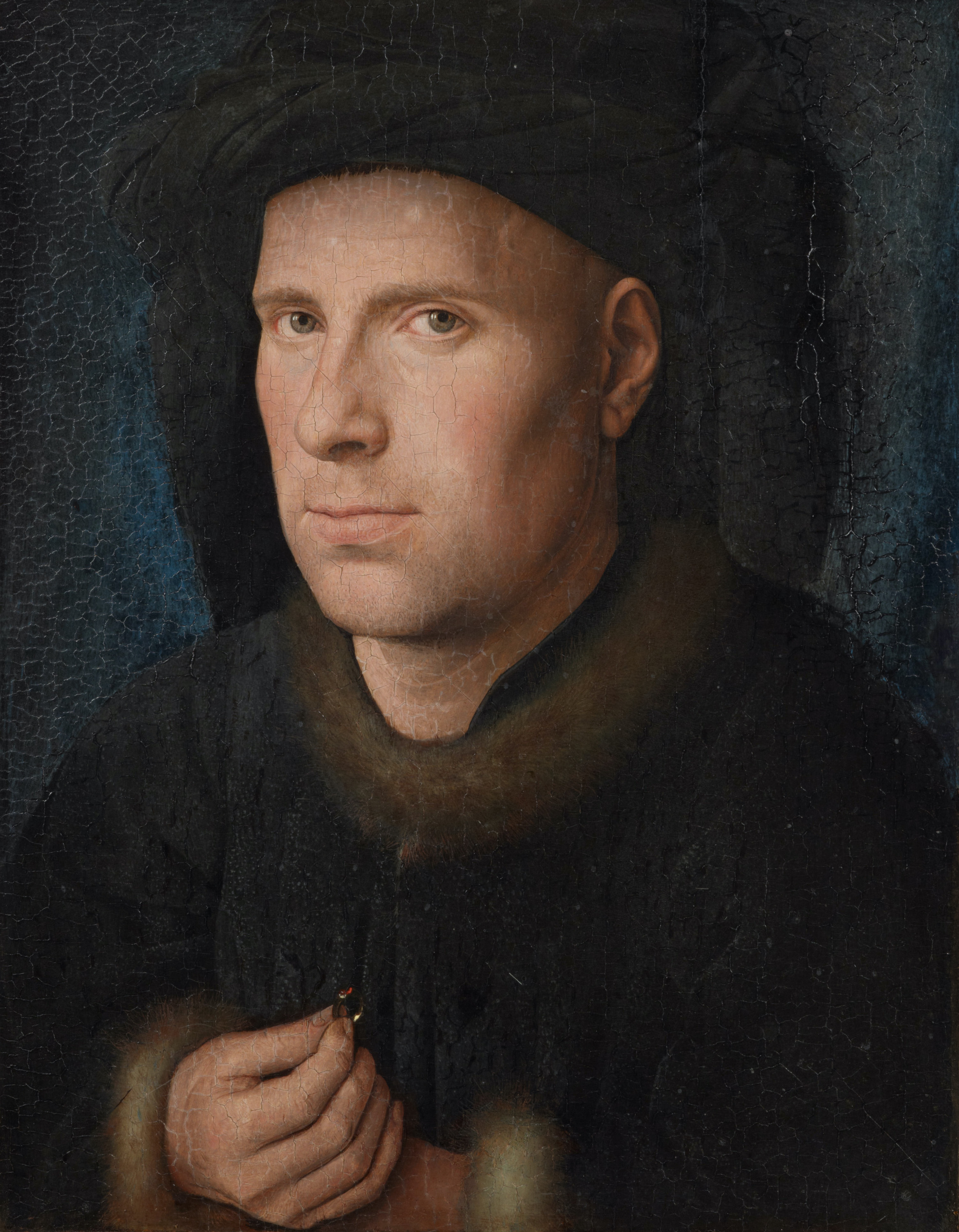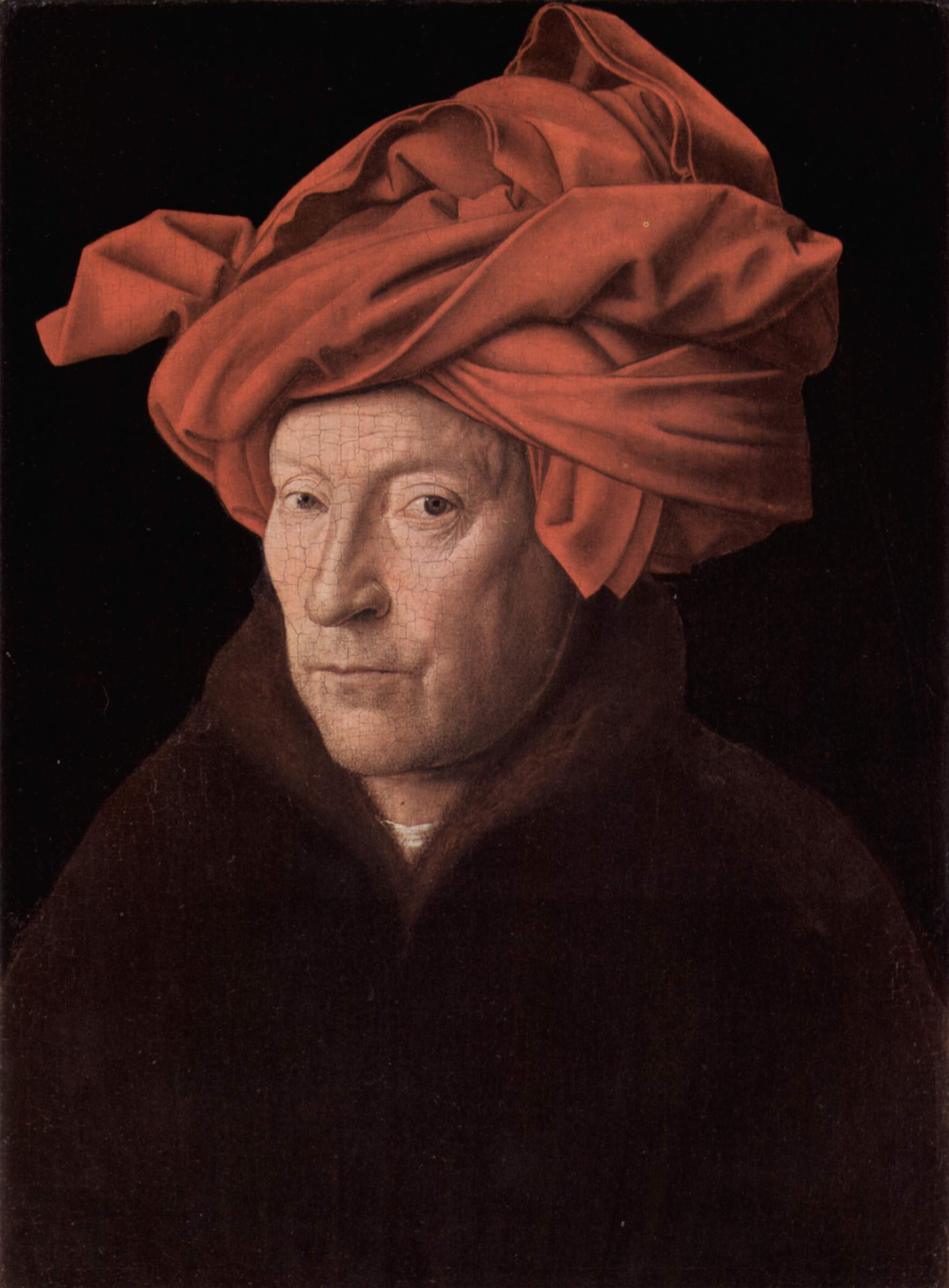Jan van Eyck is among the earliest portrait painters, and during his lifetime this subject matter evolved into an autonomous genre. Prominent patricians were particularly keen to establish and proclaim their social status by becoming part of the pictorial tradition formerly reserved for members of the nobility. With his portraits, van Eyck founded a tradition of careful observation and illusionism that was to dominate Early Netherlandish portraiture. He imbues his sitters with an until-then unknown presence that seems to capture their very essence, their character, and to depict them with meticulous attention to even the smallest detail of their appearance—be it in the color of his or her eyes, their wrinkles, or their crow’s feet. By having his sitters face the viewer (as in this painting of the goldsmith Jan de Leeuw), the artist creates a unique bond and closeness between them.
Who was Jan de Leeuw? Because van Eyck inscribed the sitter’s name and a date on the extant original frame, and thanks to research, we have known since the early 20th century that De Leeuw was a goldsmith active in Bruges; in 1441 he was even elected dean of the guild of goldsmiths and silversmiths.
The painting was part of the huge Van Eyck. An Optical Revolution exhibition in Museum of Fine Arts Ghent and we present today's painting thanks to the Kunsthistorisches Museum in Vienna. It is one of my favorite museums in the world. <3
P.S. Here are 10 things you need to know about Jan Van Eyck!


 Jan van Eyck
Jan van Eyck